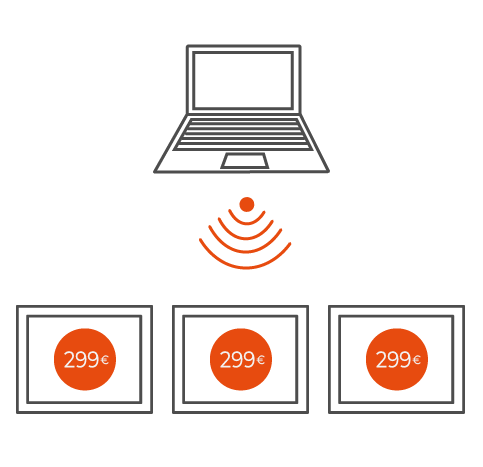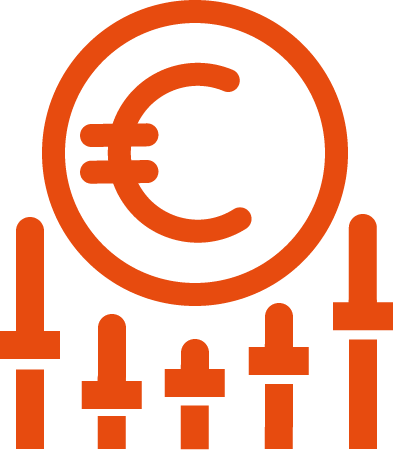Today, the retail environment is evolving rapidly. Complying with provisions like the Omnibus Directive, especially regarding consumer rights, can cause significant headaches for retailers. Solutions such as Electronic Shelf Labels (ESL) offer a viable way to ensure compliance with regulatory requirements.
Understanding the Omnibus directive
The omnibus directive entered into force on January 1, 2023, with the aim of giving consumers clear and fair information about product prices when shopping. The directive protects consumers, especially with regard to offers, so that they can easily compare the offer price with the normal price. Let’s say that the store advertises sneakers for half price, the price of which was 200 euros the previous day. During the 30 days preceding the campaign, however, they were sold at the lowest price of 100 euros, so 100 euros must be stated as the reference price from which the discount is calculated. The decisive factor is the lowest price of the previous 30 days. This prevents retailers from raising prices just before a discount campaign to create the illusion of a discount for the consumer.
Retailers must comply with these requirements under the pressure of a penalty. Primarily, the consumer has the right to demand a discount if the misleading price presented by the seller has clearly influenced the purchase decision. As an even tougher punishment, the seller can be fined if they have intentionally or negligently violated the Consumer Protection Act. A particularly serious violation can be punished with a fine, which can be up to 4% of turnover. The pressure to comply with the Omnibus Directive is therefore intentionally hard, but it is not always necessarily easy.


What challenges does the Omnibus directive pose for retailers?
The 30-day Omnibus price rule, which aims to protect consumers, can be challenging, especially for a retailer with a chain of physical stores. If the retailer wants the prices of the products to be the same in every store, this is tedious when working with paper price tags. The margin of error is large when the staff manually changes the product price tags in each store. Even in Finland, companies have received sanctions because of this, even though in many cases it is about a human error. In the online stores, the price can be updated automatically, but in the physical stores you have to get the lowest price down to the price tag.
Implementing the 30-day rule in practice is mainly the responsibility of the store’s staff. This requires proper training of the staff, which requires resources from the company. Consistent compliance with the rules is easier in an online store, because the system does exactly what is asked of it. The possibility of mistakes and thus financial sanctions is smaller. Inconsistency in pricing can reduce customers’ trust and desire to do business in the store. Things spread quickly through spam radio, which can damage the company’s reputation. Once the consumer’s trust is lost, it is difficult to get it back.
Utilization of electronic shelf labels
Electronic shelf labels can serve as an aid for a company that wants to comply with the Omnibus Directive easily and effortlessly. Listed below are various ways in which digital price tags can be used for directive-friendly pricing and good customer relations.

Centralization of pricing
Electronic shelf labels can be a key part of retailers’ efforts to ensure the correctness of the displayed price. By connecting the electronic shelf labels to the checkout system, the retailer has a centralized platform to manage price information uniformly in all of its stores. By integrating electronic shelf labels into pricing databases and inventory management systems, retailers can ensure price accuracy. This allows them to reduce the likelihood of human error or price discrepancies that can lead to non-compliance with regulations such as the 30-day price rule.
Possibility of dynamic pricing
Electronic shelf labels are the retailer’s gateway to the benefits offered by dynamic pricing. Dynamic pricing with electronic shelf labels help the retailer respond more easily to changing market conditions, competitors’ pricing and customer demand. The omnibus directive still brings its own challenge here, as the original price must be the same for at least 30 days. If the price of the product changes automatically based on various market factors, the original price may be lower compared to the new price. The product may be left on the shelf by the consumer, because they would have to pay more for the product at that very moment. In an ideal situation, of course, this works the other way around, i.e. the moment of purchase is favorable for the consumer when the price of the product is cheaper than before.


Increasing customer trust
Transparent pricing practices are really important for customer trust and loyalty. With the help of electronic shelf labels, retailers can provide consumers with clear and accurate price information, which reduces misunderstandings and the risk of disputes due to pricing differences. By promoting pricing transparency, retailers can build stronger relationships with customers and ensure that they want to do business in the store again.
Omnibus directive and electronic shelf labels in a nutshell
In conclusion, electronic shelf labels can help retailers navigate the jungle of regulations like the Omnibus directive. Simplifying pricing processes, dynamic pricing and increasing transparency are all benefits that come with electronic shelf labels. Electronic shelf labels offer a comprehensive solution for retailers who strive to be compliant while promoting the growth of their retail business.

